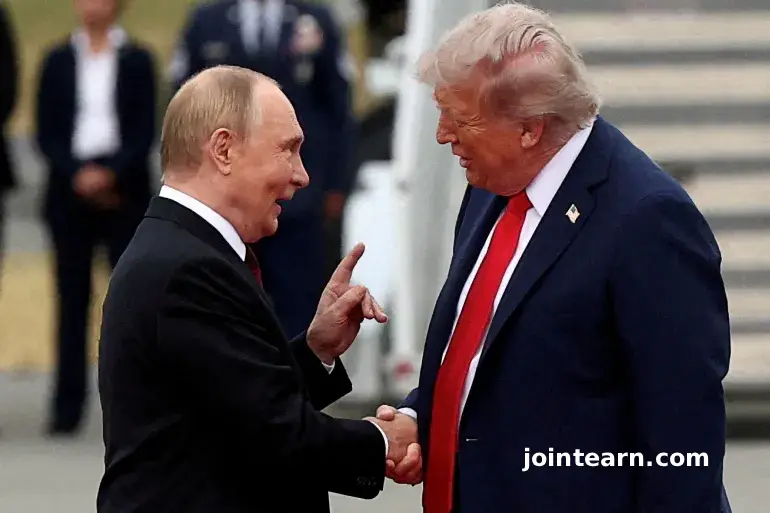
In a proposal that has captured global attention, a Kremlin envoy has suggested constructing an unprecedented undersea tunnel connecting Russia and the United States. The ambitious project, informally dubbed the “Putin-Trump Tunnel,” could potentially link Siberia and Alaska, fostering enhanced cooperation, joint resource exploration, and strategic economic collaboration between the two nations.
Proposal Details: A 112-Kilometer Siberia-Alaska Tunnel
Kirill Dmitriev, a key Kremlin investment envoy and CEO of the Russian Direct Investment Fund, outlined plans for a 112-kilometer (70-mile) railroad and cargo tunnel under the Bering Strait. According to Dmitriev, the tunnel would not only serve as a logistical corridor but also unlock joint resource exploration opportunities in the Arctic region—a zone rich in oil, natural gas, and rare minerals.
Dmitriev highlighted the potential involvement of U.S. billionaire Elon Musk and his company, The Boring Company, in constructing the tunnel. In a post shared on X, Musk’s social media platform, Dmitriev tagged Musk and wrote:
“Let’s build a future together. Imagine connecting the U.S. and Russia, the Americas and Afro-Eurasia, with the Putin-Trump Tunnel.”
As of the latest reports, Musk had not publicly commented on the proposal.
Trump’s Reaction and International Perspectives
U.S. President Donald Trump, known for his pro-energy agenda, referred to the tunnel concept as “interesting” during a White House meeting with Ukrainian President Volodymyr Zelenskyy. When asked for his opinion, Zelenskyy expressed that he was “not happy with this idea,” reflecting regional tensions and differing strategic priorities.
Dmitriev has also floated the idea of broader Arctic energy cooperation, suggesting the United States could join Russia and China in joint hydrocarbon projects. With Arctic ice receding due to climate change, resource-rich territories are becoming increasingly accessible, sparking international interest in energy exploration, mining, and infrastructure development.
Historical Context: Bering Strait Connections
The concept of connecting Russia and the U.S. via the Bering Strait is not entirely new. At the strait’s narrowest point—82 kilometers (51 miles)—Russia’s Chukotka region lies just across from Alaska. The Diomede Islands, split between Russia and the U.S., are a mere 4 kilometers (2.4 miles) apart, symbolizing the proximity and potential for a physical link.
Historical proposals for connectivity date back at least 150 years. During the Cold War, plans for a “Kennedy-Khrushchev World Peace Bridge” were considered, aiming to unite continents and encourage global collaboration. Dmitriev shared sketches of this era, emphasizing the renewed feasibility of such a bold infrastructure project.
Strategic and Economic Implications
If realized, the Putin-Trump Tunnel could revolutionize trade and energy logistics between North America and Eurasia. Beyond facilitating cargo transport, the tunnel could enable new partnerships in mining, energy production, and scientific research in the Arctic. Experts argue that a permanent land-sea route could dramatically reduce shipping costs and enhance geopolitical influence in the strategically important Arctic region.
However, the proposal also raises questions about environmental impact, construction feasibility, and international diplomacy. Tunneling beneath the Bering Strait poses formidable engineering challenges, including extreme weather, seismic activity, and the sensitive Arctic ecosystem.
Upcoming Diplomatic Developments
Dmitriev’s tunnel proposal coincided with high-level talks between Trump and Russian President Vladimir Putin. A two-hour phone call on Thursday set the stage for an upcoming meeting in Budapest, Hungary, within the next two weeks, according to the Kremlin. Both leaders are reportedly exploring ways to advance cooperation on energy, trade, and infrastructure projects.
The Road Ahead: Feasibility and Future Prospects
While the tunnel remains a conceptual idea, its potential to reshape global trade and Arctic development is undeniable. As Dmitriev notes, “The time has come to do more and connect the continents for the first time in human history.” Whether this vision comes to fruition will depend on political will, technological innovation, and international collaboration.


Leave a Reply